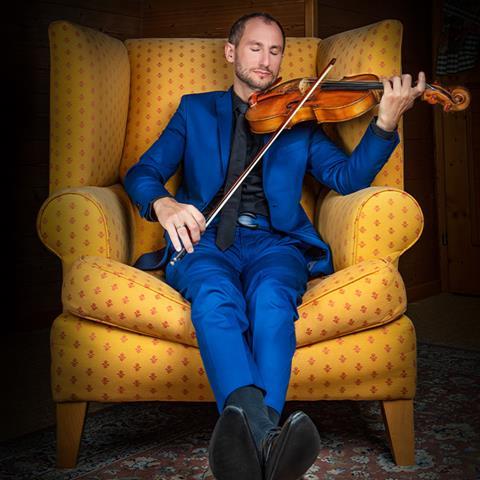The French violist has performed Mozart’s Sinfonia concertante with a host of different violin soloists, but the second movement still packs a hefty emotional punch

Discover more Featured Stories like this in The Strad Playing Hub.
Read more premium content for subscribers here
Mozart’s Sinfonia concertante may be the piece I’m asked to perform more than any other. It’s popular with orchestras and audiences, partly because there are two soloists to watch, and simply because it’s such a powerfully dramatic piece. For me, the deep emotion of the second movement is unsurpassed in all of Mozart’s works, and the uplifting humour of the third takes on an opposite, completely charming, character. There’s no way a listener can’t love the spirit of the third movement after the passion of the second!
Strangely, the first time I heard the full piece was the first time I played it. I was 17 and at a rehearsal at the Conservatoire de Paris, when the conductor suggested we just play something for fun. One of my best friends, a violinist, chose the Sinfonia concertante (so he could play the solo part), and we sightread it with the orchestra. I was so excited to hear the whole thing, especially because it was the first piece I’d heard that really had an equal dialogue between violin and viola. Then, when I was studying at Yale a few years later, I performed it in a concerto competition with another friend. We rehearsed it together for a whole year, and again the arching, emotional power of that second movement gave me goosebumps. In the end we won the competition and got to perform in Yale’s biggest concert hall.
As there are far more solo violinists than violists, I’ve been able to perform the Concertante with many different violinists and with each of them I’ve discovered a special and unique connection to the music. When you’ve found that rapport with the other soloist, the piece just becomes better. I played it with Frank Peter Zimmermann on 27 January 2006 to mark Mozart’s 250th birthday. Right from the first rehearsal we felt this connection, and after the second, Frank asked me if I’d like to perform trios together. That was the birth of what became Trio Zimmermann, with cellist Christian Poltéra joining us later. In 2015, Frank and I recorded the Concertante with the Bavarian Radio Chamber Orchestra and we chose not to have a conductor, so we could find the same chamber music-like balance as we’d found in our trio.

Most recently I’ve been playing the Concertante with Isabelle Faust and the English Baroque Soloists under Sir John Eliot Gardiner. It was Gardiner who suggested, five years ago, that I play it the way Mozart had originally written it, with scordatura. Before that, I’d thought he’d done that because it’s easier to play with the strings tuned a semitone higher, but now I strongly believe it’s because the viola part sounds more resonant when playing in D major rather than E flat. As in his quintets, Mozart gives the viola its own personality, which comes through more easily with this tuning, so I’ve kept playing this way for the past five years. In many performances, I also use a Classical bow and gut strings, which really adds to the colour of the piece along with the oboes, horns and other period instruments.
One of the hardest things about playing the Concertante is the powerful emotional effect that the second movement physically has on me. There’s a succession of descending intervals, then the viola goes up to a minor 2nd, then there’s a development so full of hope and tenderness that is truly heart- wrenching. Gardiner advised me to be careful not to be so carried away into my own feelings, as there could be a danger of losing the rapport with the other musicians on stage. So sometimes I have to keep playing while feeling my throat blocked, tears welling up in my eyes, and the bow almost shaking in my hands. Gardiner said it best when he told me, I just have to play through my feelings, and remain a servant to the listener and the music.
INTERVIEW BY CHRISTIAN LLOYD
Read: Antoine Tamestit on the ‘Mahler’ Stradivari viola
Read: Masterclass: Antoine Tamestit on Brahms Viola Sonata op.120 no.1 third and fourth movements
Discover more Featured Stories like this in The Strad Playing Hub.
Read more premium content for subscribers here
The number one source for playing and teaching books, guides, CDs, calendars and back issues of the magazine.
In The Best of Technique you’ll discover the top playing tips of the world’s leading string players and teachers. It’s packed full of exercises for students, plus examples from the standard repertoire to show you how to integrate the technique into your playing.
The Strad’s Masterclass series brings together the finest string players with some of the greatest string works ever written. Always one of our most popular sections, Masterclass has been an invaluable aid to aspiring soloists, chamber musicians and string teachers since the 1990s.
This year’s calendar celebrates the top instruments played by members of the Australian Chamber Orchestra, Melbourne Symphony, Australian String Quartet and some of the country’s greatest soloists.













































No comments yet